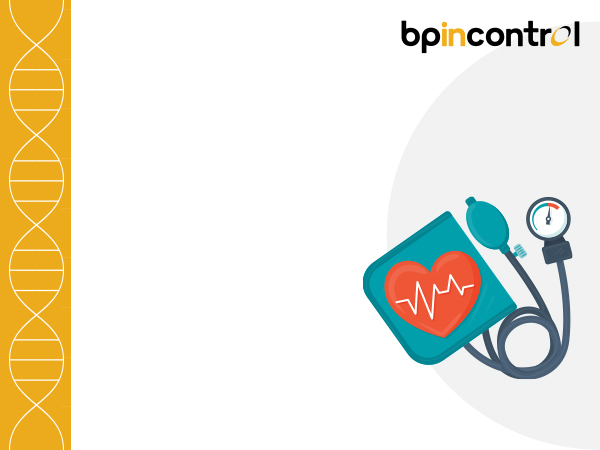Diastolic Dysfunction: Causes, Symptoms, Diagnosis & Treatment

Table of Contents
The human heart is an incredible organ, tirelessly pumping blood to every cell in our body, ensuring our survival and vitality. However, like any finely tuned machine, it is susceptible to various malfunctions. Diastolic dysfunction is one such condition that affects the heart’s intricate workings, and it’s essential to shed light on this often under-discussed aspect of cardiovascular health.
Welcome to our comprehensive guide on diastolic dysfunction, a condition affecting the heart’s ability to relax during its resting phase. Heart health is of utmost importance, and understanding diastolic dysfunction can help us recognize its causes, symptoms, proper diagnosis, and the best treatment options available. So, let’s delve deeper into the intricacies of diastolic dysfunction and empower ourselves to safeguard our most vital organ — the heart.
What is Diastolic Dysfunction?
Diastolic dysfunction, also known as left ventricular (lv diastolic dysfunction), is a cardiac condition that perturbs the heart’s ability to relax and adequately fill with blood during the diastolic phase of the cardiac cycle. The diastolic phase is when the heart muscle relaxes and refills with blood before the next contraction. In the case of diastolic dysfunction, the heart becomes less compliant, leading to impaired relaxation and reduced filling capacity. Consequently, the heart encounters challenges in pumping a sufficient volume of blood to meet the body’s demands, thereby affecting overall cardiac function.
It is imperative to differentiate diastolic dysfunction from systolic heart failure, as both conditions impact distinct phases of the cardiac cycle. While diastolic dysfunction is characterised by impaired relaxation and filling, systolic heart failure involves the heart’s inability to contract effectively during systole, resulting in diminished pumping function. If left unaddressed, diastolic dysfunction can progress to diastolic heart failure, wherein symptoms resembling heart failure, such as dyspnea and fatigue, can manifest without a significant reduction in the heart’s pumping ability (ejection fraction).
Causes of Diastolic Dysfunction
Several factors can contribute to the development of diastolic dysfunction. These causes include:
- Hypertension: Persistent high blood pressure can lead to structural changes in the heart, making the heart muscle stiffer and less able to relax during diastole.
- Coronary Artery Disease (CAD): CAD can cause a decrease in blood flow to the heart muscle, leading to fibrosis and reduced compliance of the heart walls.
- Sleep Apnea: Untreated sleep apnea, a condition where breathing stops and starts during sleep, is associated with increased pressure on the heart and can contribute to diastolic dysfunction.
- Obesity: Excess body weight can put strain on the heart, leading to changes in heart structure and function, including diastolic dysfunction.
- Diabetes: Poorly controlled diabetes can cause damage to blood vessels and the heart muscle, leading to diastolic dysfunction.
- Ageing: As individuals age, the heart’s ability to relax may naturally decline, making older adults more susceptible to diastolic dysfunction.
- Heart Attack (Myocardial Infarction): A heart attack can also lead to scar tissue formation in the heart, affecting its ability to relax and fill with blood properly.
- Valvular Heart Disease: Conditions such as aortic stenosis or mitral valve regurgitation can impact diastolic function by affecting blood flow within the heart.
NOTE: It is important to note that while these factors may increase the risk of developing diastolic dysfunction, not everyone with these risk factors will develop the condition. Additionally, addressing these risk factors through lifestyle modifications and appropriate medical management can help reduce the likelihood of diastolic dysfunction and promote heart health.
Symptoms of Diastolic Dysfunction
Diastolic dysfunction may not always present noticeable symptoms in its early stages. However, as the condition progresses, the following symptoms may become evident:
- Shortness of Breath: Difficulty breathing, especially during physical activity or lying flat, can indicate reduced cardiac function.
- Fatigue: Feeling excessively tired or fatigued, even with mild exertion, can be a sign of inadequate blood flow to the body.
- Swelling (Edema): Fluid retention, particularly in the legs, ankles, or feet, may occur due to the heart’s inability to efficiently pump blood.
- Palpitations: Irregular heartbeat or palpitations can be a sign of an underlying heart rhythm abnormality.
- Exercise Intolerance: Difficulty performing regular physical activities due to reduced cardiac output.
- Chest Discomfort: Some individuals may experience chest pain or discomfort, which can be mistaken for a heart attack.
- Dizziness or Fainting: Reduced blood flow to the brain may result in dizziness or fainting spells.
Diagnosis & Test for Diastolic Dysfunction
Diagnosing diastolic dysfunction involves a thorough evaluation by a healthcare provider, who will consider the patient’s medical history, conduct a physical examination, and order specific diagnostic tests. The goal is to assess the heart’s function, identify any abnormalities, and determine the presence and severity of diastolic dysfunction. A healthcare provider may consider the following:
- Echocardiogram: This non-invasive ultrasound test provides detailed images of the heart’s structure and function, helping to assess diastolic function. Through this test, doctors can assess the thickness and flexibility of the heart muscle, as well as the movement of the heart walls during the diastolic phase.
- Cardiac MRI: Cardiac MRI is a more detailed imaging technique that provides comprehensive information about the heart’s structure and function. It can identify any structural changes in the heart, such as thickening of the heart walls or fibrosis, which may be contributing to diastolic dysfunction.
- Stress Tests: These tests evaluate the heart’s response to physical stress, helping to detect any abnormalities.
- Blood Tests: Blood tests can help assess kidney function, electrolyte levels, and rule out other conditions that may mimic diastolic dysfunction.
- Electrocardiogram (ECG or EKG): An electrocardiogram records the heart’s electrical activity, helping to identify irregular heart rhythms (arrhythmias) that may be associated with diastolic dysfunction. It provides valuable information about the heart’s electrical signals, which can aid in diagnosing underlying heart conditions and guide treatment decisions.
Treatment for Diastolic Dysfunction
The treatment approach for diastolic dysfunction aims to manage underlying causes, improve heart function, and alleviate symptoms. Treatment options may include:
- Lifestyle: Adopting a heart-healthy lifestyle, including a balanced diet, regular exercise, weight management, and stress reduction, is essential.
- Medications: Your healthcare provider may prescribe medications like ACE inhibitors, beta-blockers, or diuretics to control blood pressure, reduce strain on the heart, and manage symptoms.
- Continuous Positive Airway Pressure (CPAP) Therapy: For individuals with sleep apnea, CPAP therapy can help alleviate the strain on the heart and improve breathing during sleep.
- Percutaneous Coronary Intervention (PCI): If coronary artery disease is a contributing factor, PCI can help open blocked arteries, improving blood flow to the heart.
- Implantable Devices: In some cases, devices like pacemakers or implantable cardioverter-defibrillators (ICDs) will be used to manage heart rhythm abnormalities.
- Cardiac Rehabilitation: Engaging in a structured cardiac rehabilitation program can help improve heart health and overall well-being.
In a Nutshell
Diastolic dysfunction is a condition that demands attention and understanding to safeguard our heart health. By comprehending its underlying causes, recognizing its symptoms, and seeking timely diagnosis and treatment, we can effectively manage this cardiac challenge. It is crucial to stay vigilant for any signs of diastolic dysfunction and promptly seek professional medical advice if symptoms arise.
Fortunately, technological advancements have made accessing healthcare resources easier than ever before. One such resource is BP in Control‘s innovative online portal, Find a Physician. With this portal, individuals can conveniently locate the nearest doctors and specialists within their vicinity, ensuring quick and convenient access to expert care and support.
In the pursuit of a heart-healthy life, let us remain informed, proactive, and committed to nurturing our most vital organ. Together, with early intervention, proper management, and the right medical guidance, we can effectively manage diastolic dysfunction and promote a lifetime of cardiovascular well-being. Remember, your heart matters, and taking steps today can lead to a healthier tomorrow. Stay informed, stay heart-healthy!
Disclaimer
The information contained in this article is to educate, spread awareness in relation to hypertension and other diseases to the public at large. The contents of this article are created and developed by BPinControl.in through its authors, which has necessary, authorisations, license, approvals, permits etc to allow usage of this articles on The Website. The views and opinions expressed in this article are views, opinions of the respective authors and are independently endorsed by doctors. Although great care has been taken in compiling and checking the information in this article, The Website shall not be responsible, or in any way liable for any errors, omissions or inaccuracies in this article whether arising from negligence or otherwise, or for any consequences arising therefrom. The content of this article is not a substitute for any medical advice. The Website shall not be held responsible or liable for any consequence arising out of reliance on the information provided in the article.


Comments (0)
No comments found.Add your comment